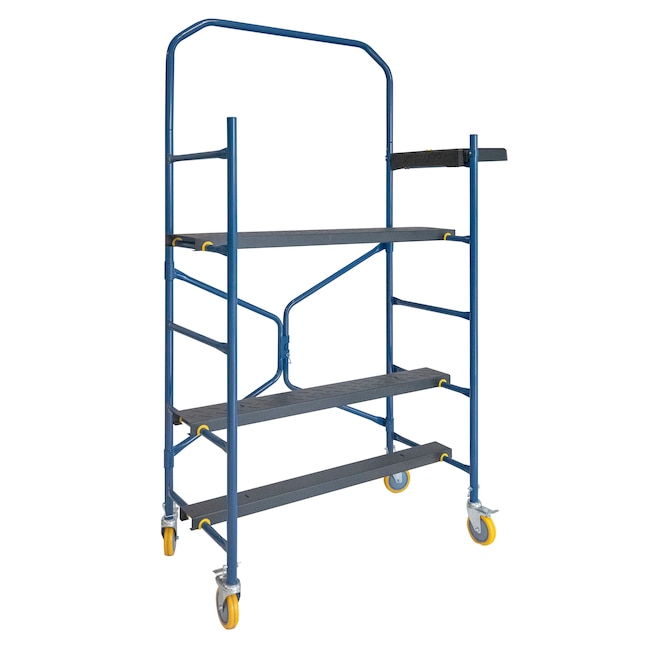Discover Leading Scaffolding Near Me for Your Home or Business Needs
Discover Leading Scaffolding Near Me for Your Home or Business Needs
Blog Article
Exploring the Various Kinds of Scaffolding Utilized in Building And Construction Tasks
The building and construction market depends heavily on different kinds of scaffolding to satisfy certain job demands, each offering distinct benefits and applications. Conventional frame scaffolding gives a sturdy structure for basic tasks, while suspended scaffolding is essential for work on high-rise structures.

Standard Frame Scaffolding
Typical framework scaffolding is just one of the most commonly made use of approaches in the construction industry due to its robustness and flexibility. This system contains straight and upright frameworks that are put together to produce a stable system for workers and products. The main components include vertical posts, horizontal journals, and diagonal dental braces, which together give a strong structure that can support significant lots.
One of the vital benefits of traditional structure scaffolding is its versatility to various building and construction jobs, ranging from residential buildings to huge commercial frameworks. The modular style allows for simple setting up and disassembly, making it reliable for both temporary and lasting tasks. Furthermore, the system can be tailored in height and width, fitting various building styles and website conditions.
Safety is critical in scaffolding applications, and typical frame systems are outfitted with guardrails and toe boards to stop drops and make certain worker security. Moreover, regular examinations and adherence to safety and security guidelines are critical in preserving the stability of the scaffold. In general, traditional structure scaffolding remains a fundamental option in the building sector, providing a reputable platform for labor and enhancing overall project efficiency

Suspended Scaffolding
Put on hold scaffolding supplies a special remedy for construction tasks that need access to raised surface areas, especially in scenarios where traditional frame scaffolding may be not practical. This kind of scaffolding is commonly put on hold from the roofing system or upper degrees of a structure, making use of a system of ropes, systems, and pulleys to produce a functioning room that can be gotten used to different elevations.
One of the primary advantages of put on hold scaffolding is its flexibility. It can be conveniently rearranged or lowered to fit changes in construction needs, making it excellent for tasks such as window setup, frontage work, and upkeep on high-rise buildings. In addition, the minimal impact of put on hold scaffolding permits much better usage of ground room in urban atmospheres, where room is frequently restricted.
Security is an essential consideration in the use of suspended scaffolding. In general, put on hold scaffolding gives a effective and effective solution for accessing hard-to-reach areas in various construction situations, improving both efficiency and safety on website.
System Scaffolding
System scaffolding, typically considered a modern remedy in the scaffolding industry, contains pre-engineered my link components that can be rapidly put together and adjusted for different building and construction jobs. Scaffolding. This kind of scaffolding is defined by its modular style, which enables flexibility and effectiveness on task sites, suiting architectural requirements and various elevations
Commonly made from high-strength steel or light weight aluminum, system scaffolding uses enhanced longevity and stability. The elements include vertical blog posts, straight journals, and diagonal dental braces, which interconnect securely, guaranteeing a durable framework. The layout typically includes standardized installations, simplifying setting up and disassembly processes, thus decreasing labor time and prices.

Rolling Scaffolding
Rolling scaffolding is a versatile option to standard fixed scaffolding, developed for movement and convenience of usage on building sites. This sort of scaffolding is composed of a platform sustained by structures with wheels, allowing workers to conveniently relocate it as required. The movement attribute dramatically boosts efficiency, as it lessens downtime associated with constructing and taking apart taken care of scaffolding.
Commonly created from lightweight products such as aluminum or steel, rolling scaffolding offers a sturdy yet mobile remedy for tasks needing frequent repositioning - Scaffolding. It is specifically useful in jobs such as paint, drywall installation, and electric work, where access to numerous elevations and locations is essential
Security is vital in rolling scaffolding design, with attributes such as locking wheels to avoid unplanned activity when in operation, and guardrails to shield workers from falls. Furthermore, numerous versions are adjustable in elevation, fitting various job needs.
Cantilever Scaffolding

The layout of cantilever scaffolding generally involves using braces or arms anchored to a building or framework, making it possible for the platform to expand outward securely. Safety and security is extremely important; hence, these scaffolds must be crafted to stand up to different lots and ecological conditions. Routine assessment and maintenance are necessary to guarantee structural scaffolding standards honesty and employee safety.
Cantilever scaffolding is preferred for its versatility and reliable use of space, making it a preferred selection in metropolitan environments where room restrictions are typical. It facilitates less complicated access to high altitudes, eventually adding to the total effectiveness of construction jobs. Similar to all scaffolding types, proper training and adherence to safety standards are essential for workers utilizing cantilever scaffolding.
Final Thought
Traditional structure scaffolding gives stability, while put on hold scaffolding uses convenience for raised jobs. System scaffolding promotes quick assembly, and rolling scaffolding enhances movement for varying work atmospheres.
Standard framework scaffolding offers a durable structure for basic jobs, while suspended scaffolding is necessary for job on high-rise structures.Moving scaffolding is a functional option to standard set scaffolding, designed for mobility and ease of use on building sites. As with all scaffolding types, correct training and adherence to safety and security standards are critical for employees using cantilever scaffolding.
Standard frame scaffolding gives security, while suspended scaffolding offers versatility for raised tasks. System scaffolding facilitates fast assembly, and rolling scaffolding enhances flexibility for differing job environments.
Report this page